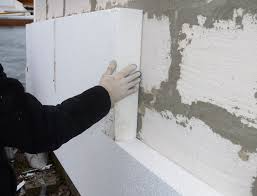
Home insulation has been a critical aspect of energy conservation and cost-efficiency in households. With the introduction of new technologies and materials, homeowners have better opportunities to insulate their homes effectively against heat loss or gain. Among these new innovations, foam cladding presents itself as a prominent solution to achieve superior energy efficiency in residential buildings.
Understanding Foam Cladding
Foam cladding is a type of exterior insulation that not only serves as a thermal barrier but also enhances the aesthetics of a building. It is composed of high-quality, lightweight panels that can be attached to the exterior walls of a home. These panels are typically made from polystyrene or polyurethane foam and can be finished with a variety of textures and colours that mimic different materials such as wood, stone, or brick.
The Benefits of Installating Foam Cladding
One of the primary benefits of installing foam cladding is its remarkable insulation properties. By forming a continuous insulative layer around the building, foam cladding minimises thermal bridges, which are areas where heat is more likely to escape or enter a building. This improved thermal performance ensures that homes stay warmer in the winter and cooler in the summer, thereby reducing the reliance on heating and cooling systems.
Additionally, well-insulated homes have a significantly reduced carbon footprint. By decreasing energy consumption, homeowners contribute to lessening the overall demand for fossil fuels and, consequently, lower greenhouse gas emissions. Thus, the installation of foam cladding supports not just individual energy savings but also broader environmental goals.
Design Flexibility and Durability
Beyond thermal efficiency, foam cladding offers exceptional design flexibility. Due to its lightweight nature and easy-to-manoeuvre panels, it can be cut and shaped to meet the specific design requirements of any home. This opens up possibilities for homeowners to update the external look of their property without cumbersome and invasive construction processes.
The durability of foam cladding is another point of attraction for homeowners. It is resistant to moisture, rot, and pests—factors that often compromise the integrity of traditional insulation materials. Moreover, when properly installed and maintained, foam cladding can last for decades, ensuring long-term protection and value for the property.
Safety and Sound Insulation Attributes
Aside from its durability and aesthetic advantages, foam cladding is acknowledged for its high safety standards. Modern foam cladding materials are treated with fire retardants to meet strict building codes and safety regulations. This safety aspect is crucial for families looking to protect their homes from potential fire hazards.
In an age where urban noise pollution continues to increase, the sound insulation attributes of foam cladding emerge as a noteworthy benefit. By effectively blocking external noise, foam cladding improves the overall comfort and tranquility of the indoor environment. This soundproofing feature is particularly advantageous for homes situated in noisy neighbourhoods or near busy streets.
The Economic Aspect of Foam Cladding Installation
Investing in foam cladding can have significant economic benefits in the long run. The reduction in energy costs, due to the enhanced thermal performance, will be reflected in the homeowner’s utility bills over time. The savings garnered from decreased heating and cooling needs can offset the initial cost of installing foam cladding, making it a financially sound decision.
Furthermore, homes with high-quality insulation like foam cladding often have increased property values. Potential buyers find well-insulated homes more appealing because they promise lower operational costs and enhanced comfort. As such, foam cladding can be seen as an investment that enhances both the energy efficiency and the market value of a property.
Easy Maintenance and Eco-Friendliness
Maintenance of foam cladding is straightforward and hassle-free, unlike some traditional cladding materials that require regular upkeep to prevent deterioration. Foam cladding is designed to withstand external elements, thereby reducing the frequency and costs of maintenance. This ease of care also means that homeowners can enjoy the benefits of insulation without the burden of persistent upkeep.
The production and installation of foam cladding are considered eco-friendly processes. Many manufacturers are adopting more sustainable practices in the production of insulation materials, aiming to reduce environmental impact. As a recyclable material, foam cladding aligns with eco-conscious construction and renovation practices that prioritise sustainability.
The Role of Professional Installation
For homeowners considering foam cladding, the importance of a professional installation cannot be overstated. Proper installation is essential to ensure that all benefits of the cladding, including thermal performance and durability, are fully realised. Certified installers possess the necessary skills and knowledge to mount foam cladding effectively, ensuring that it functions optimally and stands the test of time.
In conclusion, foam cladding stands out as an innovative and multifaceted solution for energy-efficient home insulation. Its thermal efficiency, design flexibility, durability, safety, soundproofing capabilities, and financial benefits make it an attractive option for homeowners looking to improve the comfort and value of their properties. With a focus on sustainability and ease of maintenance, foam cladding is not just an investment in a home but also an investment in the future of our planet.
Leave a Reply